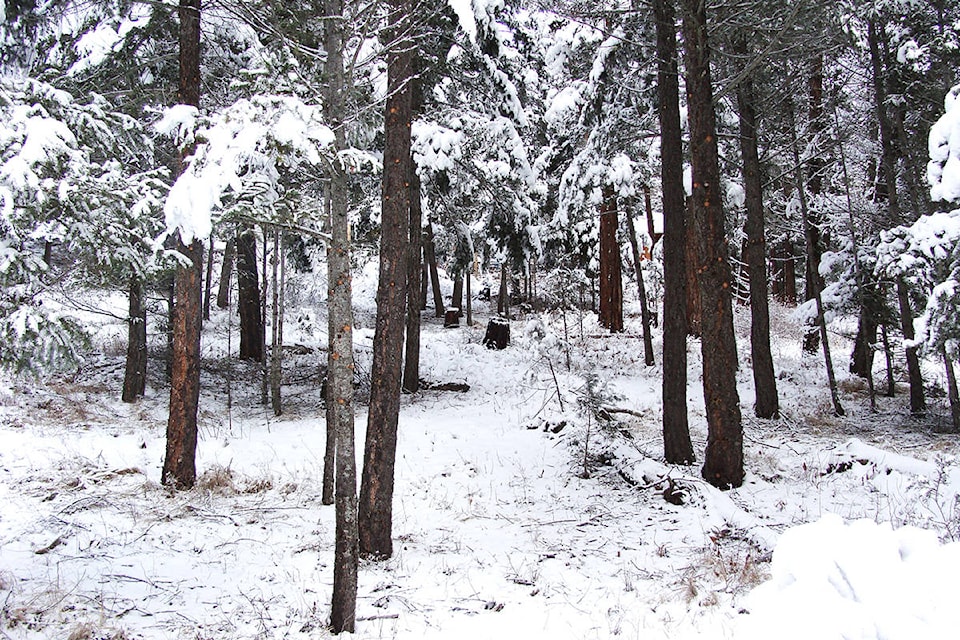Jim Hilton
Observer Contributor
The Council of Forest Industries (COFI) paper was published in September of this year and had 60 recommendations for ways to improve the B.C. Forest Industry.
While I support many of the recommendations, I have added comments that I think help clarify and strengthen the material presented.
“1. Define the working forest land base. Like conservation areas, designate the area that will be available for harvesting and lock in the commitment. Undertake a review every five years.”
I support the idea of identifying a forest harvest land base but also think there should be a recognition of a mature forest component with a separate annual allowable cut (AAC) that would allow a long-term commercial use of mature old-growth species.
“4. Expand the use of Light Detection and Ranging (LiDAR), artificial intelligence and drone technology to complete an updated enhanced Standing Timber Inventory. Use the updated inventory to improve yields and mitigate timber supply impacts.”
I think one of the first projects that should take place (if it has not been done already) is an update of the inventory database due to the 2017 and 2018 wildfires. This would help identify what areas need to be rehabilitated and look at the possibility of fireguarding some protected areas and establishing a harvest plan for damaged trees. I also support the replanting of “Not Sufficiently Restocked (NSR) areas to return them to productive forests along with the goal of achieving 100 per cent completion within five years and then implement an intensive second-growth management program that includes commercial thinning.” Rather than clear-cutting in some mature stands, the commercial thinning could also be tried here as well.
“8. Create a biomass tax credit to incent utilization of residual forest fibre, create employment opportunities, and advance the low-carbon economy.” While I support this recommendation, I would like to see some specific projects initiated like the natural gas and biodiesel production trials ongoing in Alberta.
“12. Transition a portion of the existing forest licenses from volume-based to area-based to encourage further investment by companies in intensive forest management.” This is a problem if it causes more concentration of tenures by a few major licensees. First priority should be community based forests. ” Recommendation 30. Also supports this idea i.e., “Increase community forest agreements and First Nations woodlands licences in areas directly adjacent to communities, to allow for greater local management, protect communities from wildfires, and provide fibre to local manufacturers.” I agree with this one as well, but it also depends on what is meant by “adjacent to.”
“38. Commission and fund a global ‘new market opportunity’ study to identify prospects and help tailor B.C.’s new product development efforts. 39. Kick-start further product research and development by considering economic incentives to drive investments into high value products from the forest resource, such as new biofuels.” As stated above, there are some very promising specific examples which should be committed to now, at the very least start with the small-scale phases.
“40. Set an industry target to increase the proportion of value-added manufacturing in B.C. by a minimum of 20 per cent within five years.”
I agree, and a good place to start is the reestablishment of the OSB plant in 100 Mile House with a more diverse product output, rather than the standard four-by-eight sheets. Also re-establish the Jackpine truss plant in Williams Lake and hopefully get the major licensees to support these kinds of local projects, rather than purchasing more sawmills out of the country.
In the past, roadside residual material was often burned because it was the cheapest method of dealing with the fire hazard, but hopefully this will change if the authors of the report are serious about the recommendations presented. The production and demand for biochar has improved a lot in the past decade, so there is no reason why we should be wasting this valuable resource.
Jim Hilton is a professional agrologist and forester who has lived and worked in the Cariboo-Chilcotin for the past 40 years. Now retired, he volunteers his skills with community forests organizations.
READ MORE: Forestry Ink: What changes are needed in B.C.’s forest tenures?
editor@quesnelobserver.com
Like us on Facebook and follow us on Twitter
